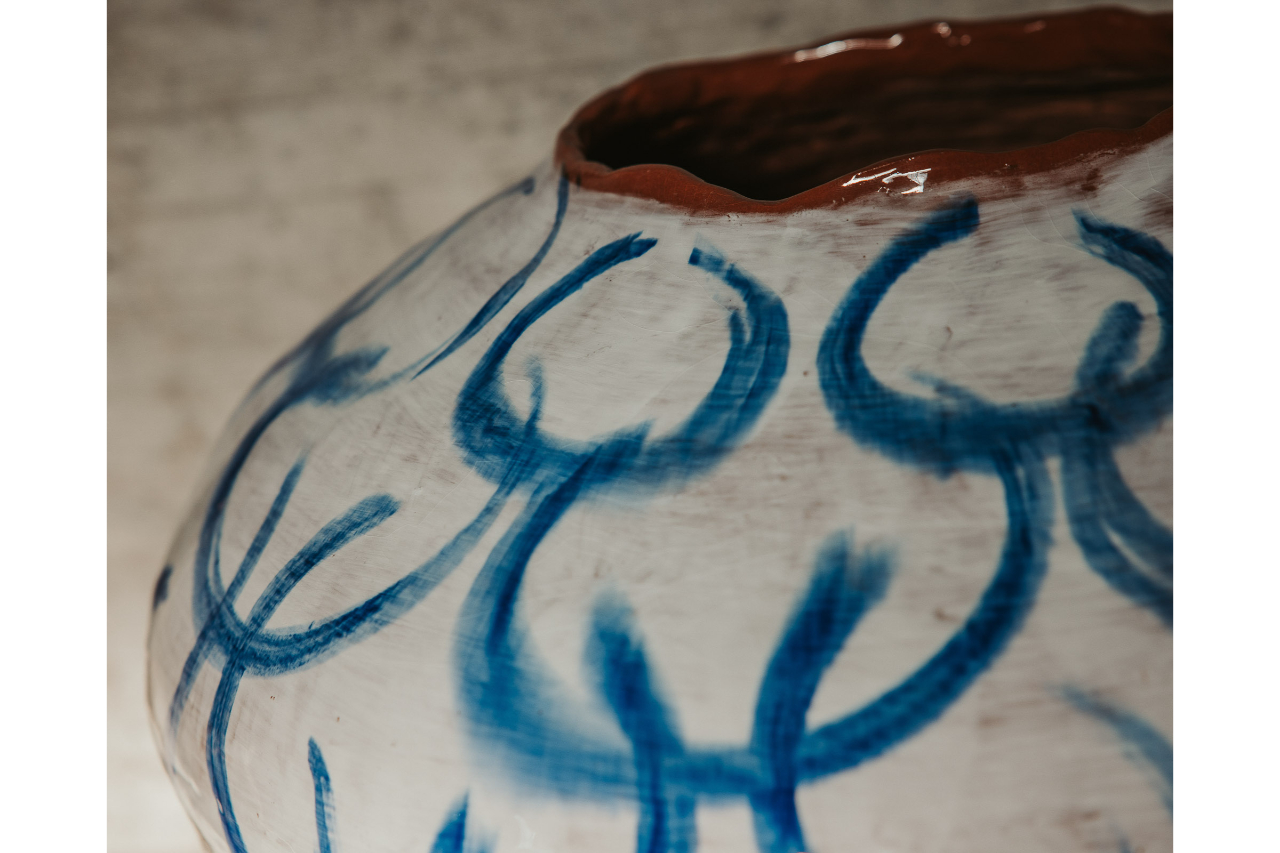











Unique, original, authentic and sustainable. These are some of the qualities attributed to Onofrio Acone, a Ceramic Maker who creates unique and inimitable pieces by hand and exclusively in ceramic. The artist was selected, in line with the founding values of Milano HOME, to exhibit his products at The Green Circle , Milano Home's exhibition space that responds to the need for a sustainable approach that respects nature and the territory.
Born in Salerno in 1977, Onofrio Acone had his first working experiences in his parents' ceramic workshop, where in those years he lived and breathed all the creativity of a small craft workshop. That's how the passion for this material was born, but also for the study of it, as he saw great potential in ceramics. Then, having developed the techniques as a self-taught artist and following his creative vein, Onofrio Acone began to create unique pieces using very few tools and machinery in order to make the most of the material while preserving its Perfect Imperfection.
Can you tell us about your passion for ceramics and how did you come up with the concept of Perfect Imperfections?
My passion for ceramics is now more than 40 years old. It is the common thread of my whole life, because I grew up in the workshop founded by my parents in 1982, when I was only 5 years old, and since then I have been passionate about this art, developing creativity and manual skills at the same time.
I really like the concept of 'Perfect Imperfections' because I like to see and imagine something beautiful in any ceramic element, even in those that are apparently ugly, uneven, or with obvious imperfections. I like ceramics so much that I appreciate every shape, even the imperfect ones. Especially the imperfect ones.
The use of rudimentary techniques and equipment, mixed with elements of nature, is not only a choice but also what really characterises your products. How sensitive are people today to the values you express through your work?
Yes, I like to work mainly with my hands, and with a few tools that I wouldn't even define 'tools', since to forge and create my pieces I use adapted, makeshift tools, such as pieces of wood found on the beach or salvaged iron pieces. I like to think that my pieces are created without the use of modern tools to facilitate the work. And at the same time I like to create pieces that are actually imperfect.
I don't like total perfection and I believe that today people, but especially collectors of ceramic pieces, appreciate items that tell of total craftsmanship much more than pieces created with the help of an electric lathe, just to give an example!
As unique and unrepeatable pieces, what added value do you think your works can convey?
I think the added value of my pieces is their total uniqueness. I do not create them following a pattern or design, but following my creativity and being guided by the piece of clay, its initial shape and the form it takes while I’m creating it. I use the columbine technique a lot, which is perhaps the oldest ceramic technique for making pots, and it fascinates me to think that no pot can ever be identical to another. I could never make two pots with the exact same shape. I just couldn't do it. Therefore uniqueness is definitely the added value.
What does it mean for you to join Milano Home and specifically to be selected for The Green Circle project?
I'm very happy to have been selected for The Green Circle project and look forward to exhibiting my pieces at Milano Home. I'm excited and I must say with high expectations.
What are your expectations for this new experience?
Expectations are high and I'm sure it will be a very positive experience to engage with an international audience as well.
How sustainable do you think you are and how important is this topic nowadays?
I believe that today the issue of sustainability is one of the most important factors in any field. My pieces are created with a 90% of natural clays and earthenware, and decorated with lead-free glazes and recycled slipware. I try to use sustainable products as much as possible, and also to waste as little energy as possible even when cooking the pieces by filling the ovens to the last available centimetre so as to avoid wasting energy.
What advice would you like to share for those who want to start a more environmentally responsible path?
Well, I think the environment is the first thing we all have to learn to protect. There is no particular advice, but I believe it is everyone's duty to avoid as much as possible wasting energy, water, and raw materials that inevitably create waste to be disposed of.
Ceramics allows us to recycle a lot, especially the raw materials we use.